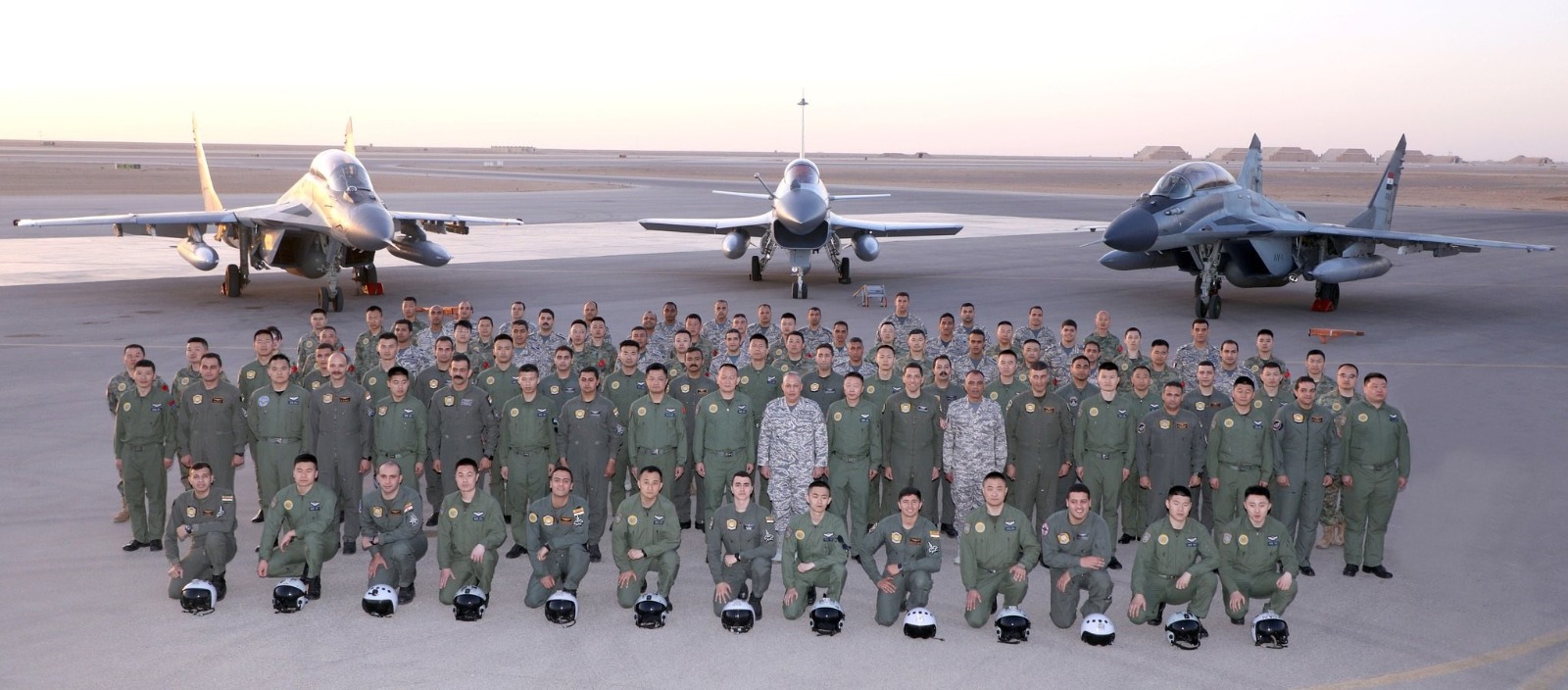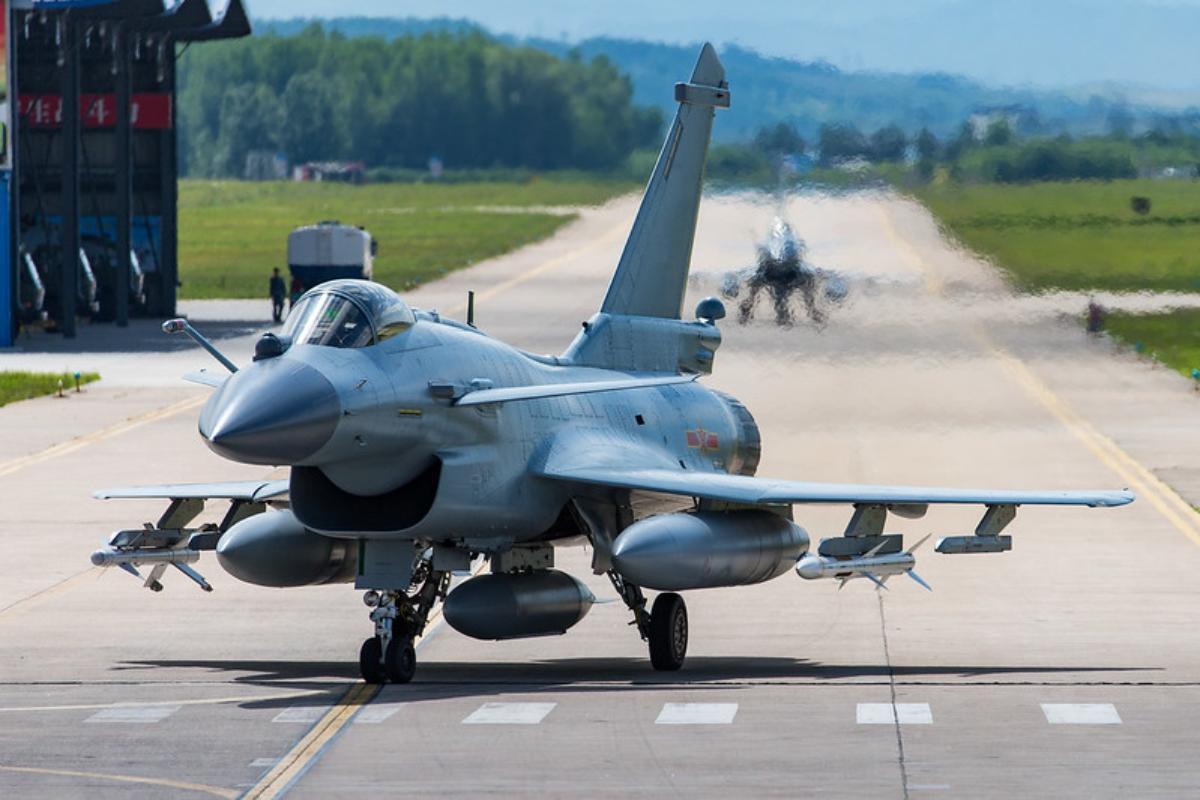For the first time, China has deployed its cutting-edge aircraft, including the J-10C, for the “Eagles of Civilization 2025” joint air drills that kicked off on April 19 in Egypt.
The deployment comes amid speculations that the Egyptian government is considering purchasing the aircraft.
The Chinese Ministry of National Defense announced the China-Egypt joint air force training, code-named “Eagles of Civilization 2025,” from mid-April to early May, on April 16.
“This is the first joint training between the Chinese and Egyptian militaries, which is of great significance to promoting pragmatic cooperation and enhancing mutual trust and friendship between the two militaries,” the statement read.
Subsequently, the Chinese People’s Liberation Air Force (PLAAF) deployed the J-10C fighters from the 18th Air Brigade and the 177th Air Brigade, along with a Y-20U aerial refuelling tanker and a KJ-500 AWACS aircraft, as reported by state-owned Chinese media.
Egypt, on the other hand, has deployed its MiG-29M/M2 Fulcrum multi-role fighters, which it acquired from Russia.
Footage from April 19, posted to social media, featured a KJ-500, twin-seat MiG-29M2, and J-10S fighters, as well as two YY-20s, one of which did not have wing refueling pods.
These joint drills are taking place about 60 miles, or over 96 kilometres, away from the Suez Canal. The exercise will enable Egypt to collaborate with China’s main medium-weight, multi-role fighter, its relatively new refueler, and one of its most advanced airborne early warning and control platforms.
In contrast, China will have a hands-on opportunity to train against the Fulcrums, which are also used by India, with which it remains embroiled in a border dispute.
Notably, this is the first time China is conducting joint air drills with Egypt, a Middle Eastern country with close ties to the United States. In fact, in January 2025, US Secretary of State Marco Rubio halted all foreign aid, making an exception only for Israel and Egypt.
In recent times, however, there has been some visible friction as Cairo refused to accept Donald Trump’s Gaza plan to take in hundreds of thousands of Palestinians from Gaza, with reports suggesting that Egypt could lose economic aid from the US for this act. Egypt received approximately US$1.5 billion in military aid from the United States in 2024.
The ongoing China-Egypt military drills are a result of burgeoning cooperation between Cairo and Beijing. Egypt has established a solid relationship with China in addition to its long-standing alliance with the United States, as demonstrated by its participation in the BRICS coalition, an intergovernmental organization that includes Brazil, Russia, India, China, South Africa, Iran, Egypt, Ethiopia, and the United Arab Emirates.
Egypt is also collaborating with China on the Belt and Road Initiative.
As for China, the strengthening of ties with Egypt is consistent with its efforts to expand outreach to Middle Eastern countries. In recent years, it has developed close relationships with Saudi Arabia, Iran, and the United Arab Emirates. It has also strengthened relationships with the Middle East and North Africa (MENA) region by capitalizing on the region’s instability.
Besides its geopolitical significance, the J-10C’s deployment to Egypt is garnering attention due to speculation that the Egyptian government might be interested in the Chinese jets.

Is J-10C Coming To Egypt?
A host of speculative reports emerged last year suggesting that Egypt was contemplating the purchase of the Chinese J-10C Vigorous Dragon combat aircraft, triggered by the aircraft’s debut at the Egypt International Air Show in September 2024.
In February this year, some local Egyptian media outlets reported that the country had secured the delivery of the aircraft from China. However, the claims were refuted by Chinese Defense Ministry spokesperson Wu Qian, who told the media that, “It is inconsistent with the facts. It is total fake news.”
Notably, Egypt has been trying to diversify its fleet, much like other Middle Eastern countries.
The Egyptian Air Force consists of American, Russian, and French fighter jets. In 2015, it ordered 24 Dassault Rafale from France and 46 MiG-29M/M2 fighters from Russia. The deliveries of the MiGs began in 2017, but the Russia-Ukraine war threw a spanner in their maintenance, and their spare supply took a hit.
Egypt had earlier purchased two dozen Su-35s from Russia—a deal that it had to later cancel, reportedly due to pressure from the United States. This has left the Egyptian Air Force with a lacuna that it has been looking to fill.
Moreover, the Egyptian Air Force needs to upgrade its F-16s or acquire more cutting-edge jets to boost its combat capability and readiness. However, the F-16 upgrades are suffering due to strict US regulations on spare part supplies and the imposition of unilateral, stringent operational limitations.
This is where the J-10C, often compared to the upgraded variants of the F-16, comes into play.

Like the F-16, the J-10 incorporates a computer-controlled fly-by-wire flight control technology that stabilizes its extremely agile yet aerodynamically unstable airframe. It can engage targets beyond visual range, launch precise air-to-ground strikes, refuel in flight, use digital glass cockpit equipment, and engage in electronic warfare.
It was earlier speculated that Egypt prefers purchasing the Chinese fighter jet rather than investing in upgrading its fleet of F-16s, as previously noted in a detailed EurAsian Times report. If this proves to be true, the country would have an enhanced capability at a lower cost and greater strategic autonomy.
China has been aggressively pursuing the Middle East market for its aircraft exports, promoting the J-10C as a better alternative to the US F-16 Fighting Falcon, the European Eurofighter Typhoon, and the French Rafale.
It has been trying to capitalize on the cost-competitiveness of its aircraft, with each unit costing around US$40–50 million compared to approximately 90-100 million for Western jets.
Besides Egypt, there has been speculation that Iran was also interested in the J-10C aircraft, as previously reported by the EurAsian Times.
If Egypt signs up for the J-10C, it may come as a big setback to the United States, which has been grappling with a reduced influence in the region. In contrast, it will represent a big win for China, which has exported the aircraft to only one country: Pakistan.
- Contact the author at sakshi.tiwari9555 (at) gmail.com
- Follow EurAsian Times on Google News




